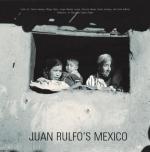|
This section contains 6,052 words (approx. 21 pages at 300 words per page) |

|
SOURCE: "The Turbulent Flow: Stream of Consciousness Techniques in the Short Stories of Juan Rulfo," in Revista de estudios hispánicos, Vol. XIII, No. 2, May, 1979, pp. 227-52.
In this excerpt, Borgeson delineates various stream of consciousness techniques used by Rulfo in his novel and short fiction, concluding that the author is able to transcend conventional linear narrative structures.
Two principal tendencies have characterized Mexican prose fiction of the twentieth century. In the first few decades, the novel and short story generally reflected the country's socio-political turmoil, as in Mariano Azuela's Los de abajo (1915) or Martín Luis Guzman's El águila y la serpiente (1926). Such social and historical analyses dominated for the first forty years or so. Meanwhile, in Europe, prose fiction was much more concerned with new trends in philosophy and psychology, in particular the ideas of Freud and Jung. These two tendencies (among others) finally came together...
|
This section contains 6,052 words (approx. 21 pages at 300 words per page) |

|


